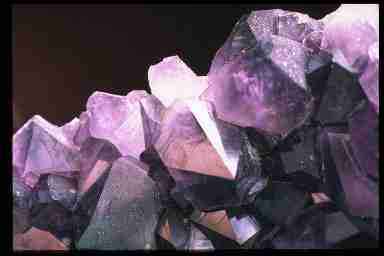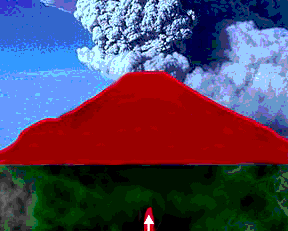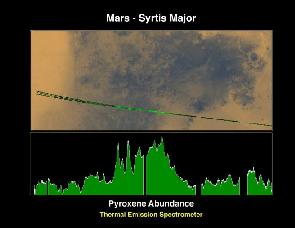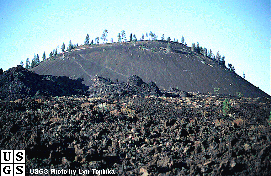This is a drawing of magma changing chemical composition within the chamber.
Click on image for full size
Magma Chamber
Magma consists of remelted material from Earth's crust and fresh material from the aesthenosphere, relatively near the Earth's surface.
When magma is erupted onto the surface in the form of lava, it becomes rock; basalt, andesite, dacite, rhyolite, and other forms of silicate rock. On subsequent eruptions of the volcano, magma leaves the chamber composed of differing chemical constituents, which result in the different forms of silicate rock listed above.
As shown in this drawing, magma in the "chamber" evolves over time into chemical compositions which result in different forms of rock, as if the magma were "cooking". It is too hot within the chamber itself for rock to crystallize, as shown in the picture, but on subsequent eruptions, lava which pours out of the chamber is composed of different material. Magma can even change composition in the middle of an eruption, as reported in the ad79 eruption of Mt. Vesuvius.
Scientists examine the lava flows of a volcano to study the chemical history of the magma inside the chamber.
You might also be interested in:

Minerals occur naturally on rocky planets and form the building blocks of rocks. They are non-living, solid, and, like all matter, are made of atoms of elements. There are many different types of minerals
...more
If you could travel to the center of the Earth, you would find that it gets hotter and hotter as you travel deeper. The heat is naturally produced by decay of radioactive elements. Within the Earth’s
...more
Volcanoes form when hot material from below risesand leaks into the crust. This hot material, called magma, comes either from a melt of subducted crustal material, which is light and buoyant after melting,
...more
Mars Global Surveyor made a measurement of pyroxene on the surface of Mars. The absence of pyroxene minerals was a puzzlement to scientists studying results returned by the Mars Pathfinder Rover's examination
...more
Ash is made of millions of tiny fragments of rock and glass formed during a volcanic eruption. Volcanic ash particles are less than 2 mm in size and can be much smaller. Volcanic ash forms in several ways
...more
Cinder cones are simple volcanoes which have a bowl-shaped crater at the summit and rarely rise more than a thousand feet above their surroundings. They usually are created of eruptions from a single vent,
...more
Lava can move in broad flat lava flows, or it can move through constrictive channels or tubes. Lava flows have a large surface area so they tend to cool quickly and flow slowly. The fastest unconstricted
...more















